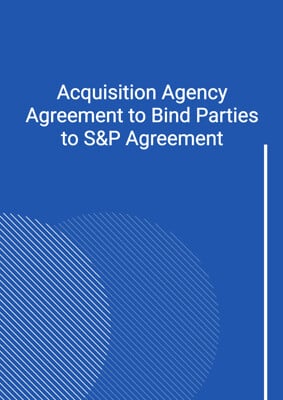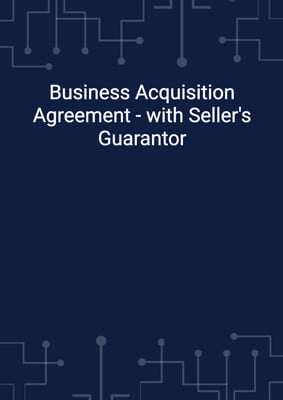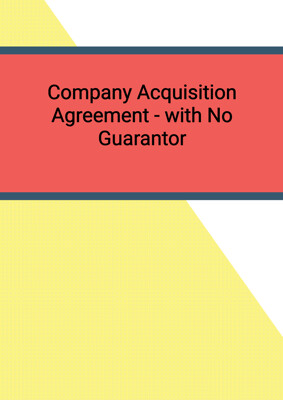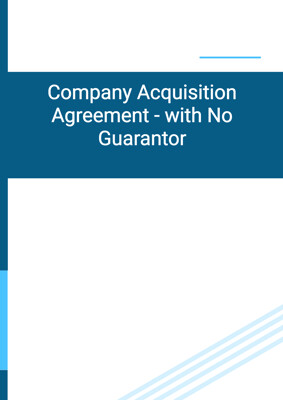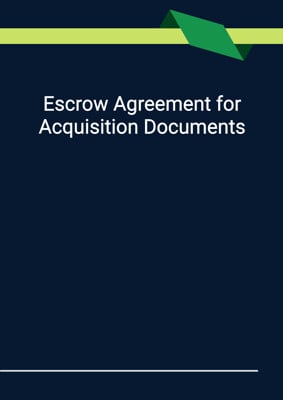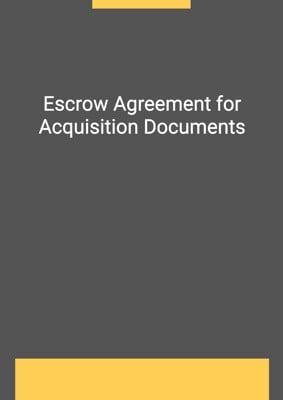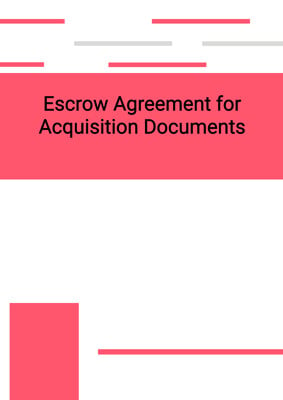How to Tailor the Document for Your Need?
01
Create Document
Fill in the details of the parties. You can click the "Fill with Member’s Information" button to complete it with information saved to your account.
02
Fill Information
Please fill in any additional information by following the step-by-step guide on the left hand side of the preview document and click the "Next" button.
03
Get Document
When you are done, click the "Get Document" button and you can download the document in Word or PDF format.
04
Review Document
Please get all parties to review the document carefully and make any final modifications to ensure that the details are correct before signing the document.
Document Preview
Document Description
The Shares Sale and Purchase Agreement is a legal document that outlines the terms and conditions for the sale and purchase of shares between two parties. It is important because it establishes the rights and obligations of both the seller and the buyer, ensuring that the transaction is conducted in a fair and transparent manner.
The entire document is divided into several sections, each addressing specific aspects of the agreement. The first section, titled 'Sale of the Shares and Consideration,' outlines the agreement between the seller and the buyer regarding the sale of the shares. It specifies that the shares will be sold free from any third-party rights and includes the total price payable by the buyer.
The second section, titled 'Completion,' describes the process of completing the sale and purchase of the shares. It outlines the events that need to take place for the transaction to be considered complete, including the delivery of share transfers and relevant documents to the buyer.
The third section, titled 'Restrictions on the Seller,' imposes certain restrictions on the seller after the completion of the transaction. These restrictions include not engaging in any competing business and not soliciting or employing any employees of the group company.
The fourth section, titled 'Warranties,' contains representations and warranties made by the seller to the buyer. These warranties ensure that the seller is providing accurate and truthful information about the group company and its financial and trading position.
The fifth section, titled 'Limitations on Claims,' outlines the limitations on the buyer's claims against the seller in case of breach of warranty. It also specifies the retention of a certain percentage of the purchase price to meet possible warranty claims.
The sixth section, titled 'Buyer's Rights to Terminate,' grants the buyer the right to terminate the agreement if certain conditions are met, such as a breach of the agreement by the seller or a material adverse effect on the group's business.
The seventh section, titled 'Withholding Tax and Grossing Up,' addresses the payment of sums under the agreement and the obligation to pay additional amounts to ensure that the net amount received is not affected by any deductions or withholdings.
The eighth section, titled 'Entire Agreement,' states that the agreement represents the entire understanding between the parties and that no party has relied on any representations or warranties not expressly set out in the agreement.
The ninth section, titled 'Counterparts,' allows the agreement to be executed in multiple counterparts, with each counterpart considered an original.
The tenth section, titled 'Further Assurance,' requires the seller to perform any further acts or execute additional documents necessary to implement the agreement and transfer the assets to the buyer.
The eleventh section, titled 'Severability,' states that if any provision of the agreement is deemed invalid or unenforceable, it will be replaced by a valid and enforceable provision that closely reflects its intended effect.
The twelfth section, titled 'Variation,' specifies that any variation of the agreement must be in writing and signed by all parties.
The thirteenth section, titled 'No Rights of Third Parties,' clarifies that only the parties to the agreement have the right to enforce its terms.
The fourteenth section, titled 'Governing Law, Jurisdiction,' determines the governing law and jurisdiction for any disputes arising from the agreement.
How to use this document?
1. Enter the relevant information: Fill in the names and addresses of the seller and the buyer in the agreement, ensuring their principal place of business is accurately stated.
2. Specify the sale and purchase details: Clearly state the number of shares being sold and purchased, along with the agreed price. Ensure that the shares are free from any third-party rights.
3. Complete the transfer of shares: Prepare and deliver the necessary transfers and share certificates to the buyer, ensuring that the shares are transferred into their name or nominee.
4. Arrange for payment: Make the payment for the shares to the seller's bank account via electronic funds transfer.
5. Comply with post-completion restrictions: Ensure that the seller and their connected persons do not engage in any competing business or solicit employees from the group company for a specified period after completion.
6. Maintain confidentiality: The seller and their connected persons should not disclose or use any trade secrets or confidential information of the group company without prior consultation with the buyer.
7. Understand the warranties: Familiarize yourself with the warranties made by the seller and their implications. Be prepared to pay damages if there is a breach of warranty.
8. Retain a portion of the purchase price: Retain a certain percentage of the purchase price for a specified period to cover any potential warranty claims by the buyer.
9. Terminate the agreement if necessary: The buyer has the right to terminate the agreement if there is a breach by the seller or if there are adverse effects on the group's business.
10. Consider tax implications: Ensure that all payments made under the agreement comply with tax laws and regulations. Additional amounts may need to be paid to account for any required deductions or withholdings.
11. Understand the entire agreement: Read and understand the entire agreement, knowing that it represents the complete understanding between the parties and that no other representations or warranties apply.
12. Execute the agreement: Sign the agreement in counterparts, ensuring that all parties have signed the same document.
13. Perform necessary actions: Fulfill any further acts or execute additional documents as required by law or requested by the buyer to implement the agreement.
14. Seek legal advice if needed: If you have any doubts or questions about the agreement, consult with a legal professional to ensure that you fully understand your rights and obligations.
Not the right document?
Don’t worry, we have thousands of documents for you to choose from:


